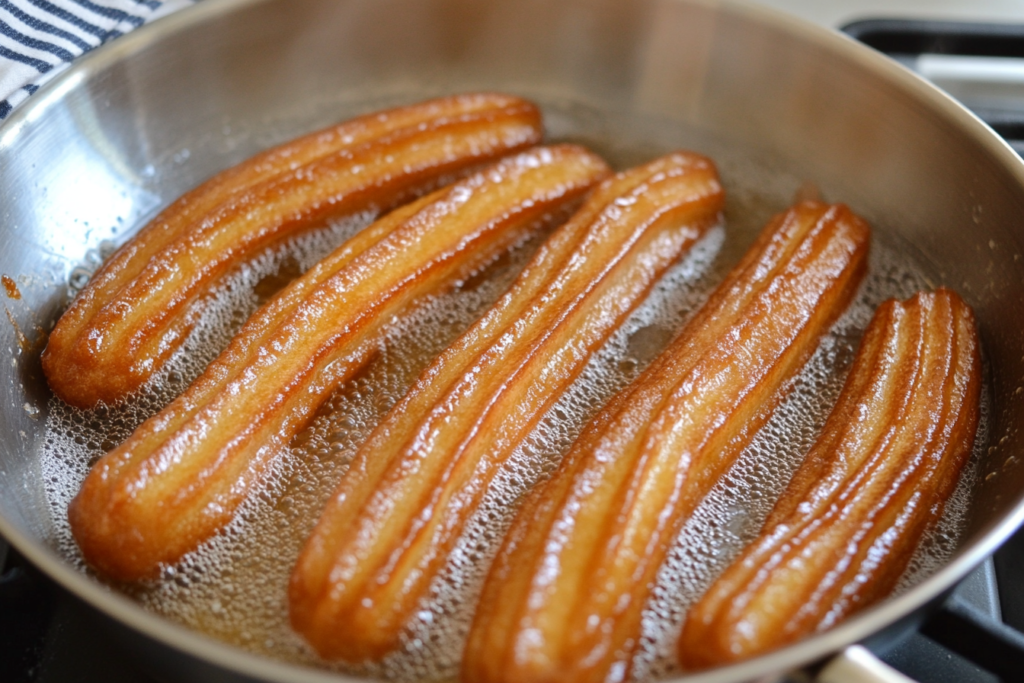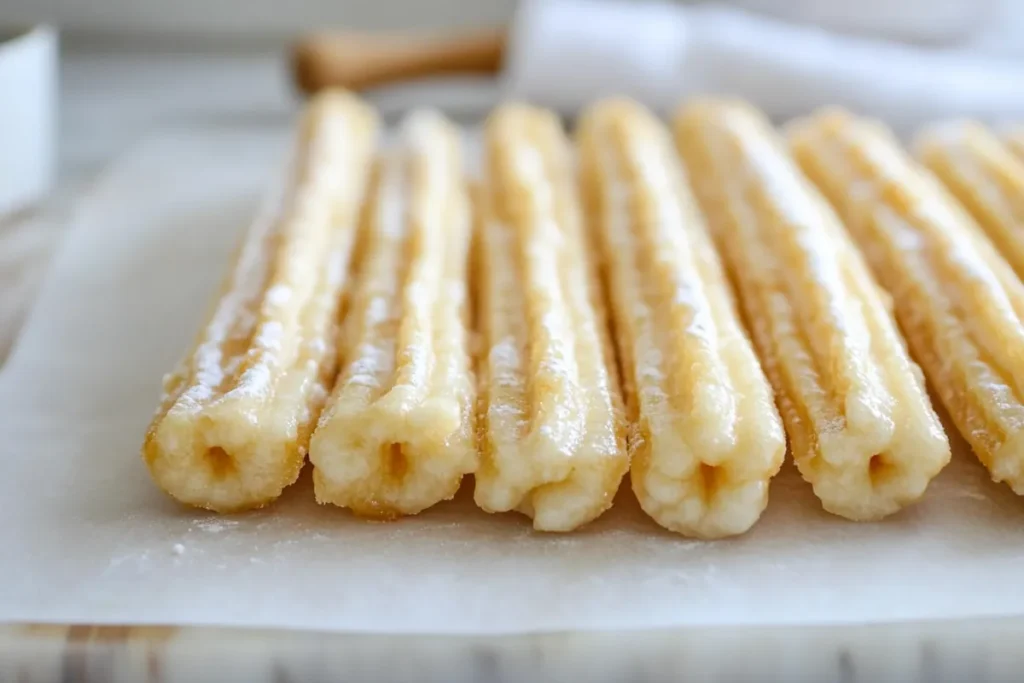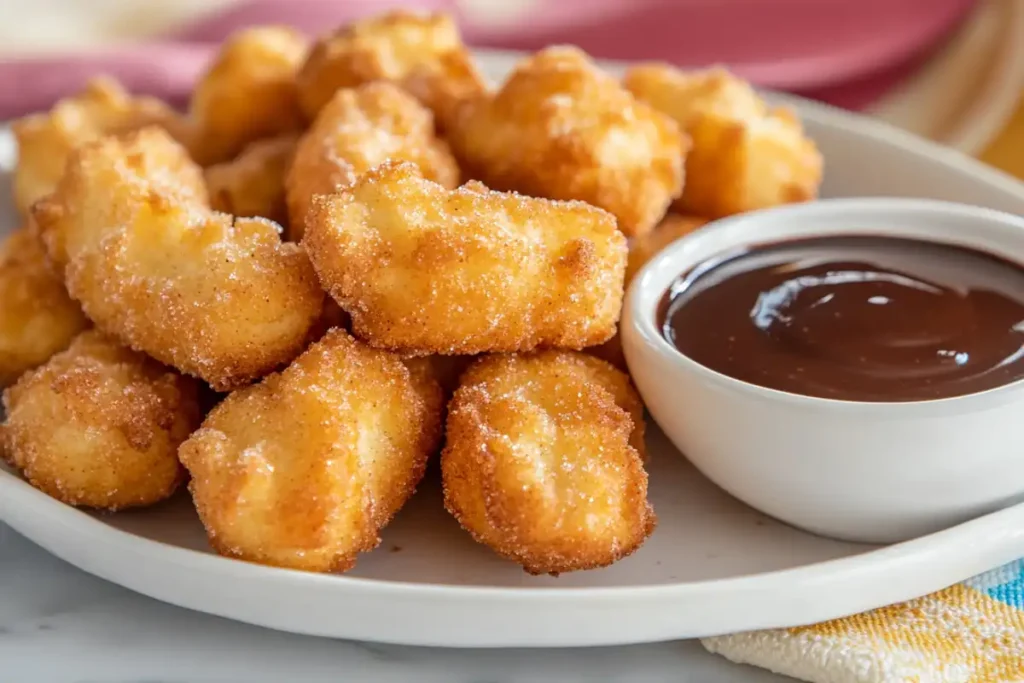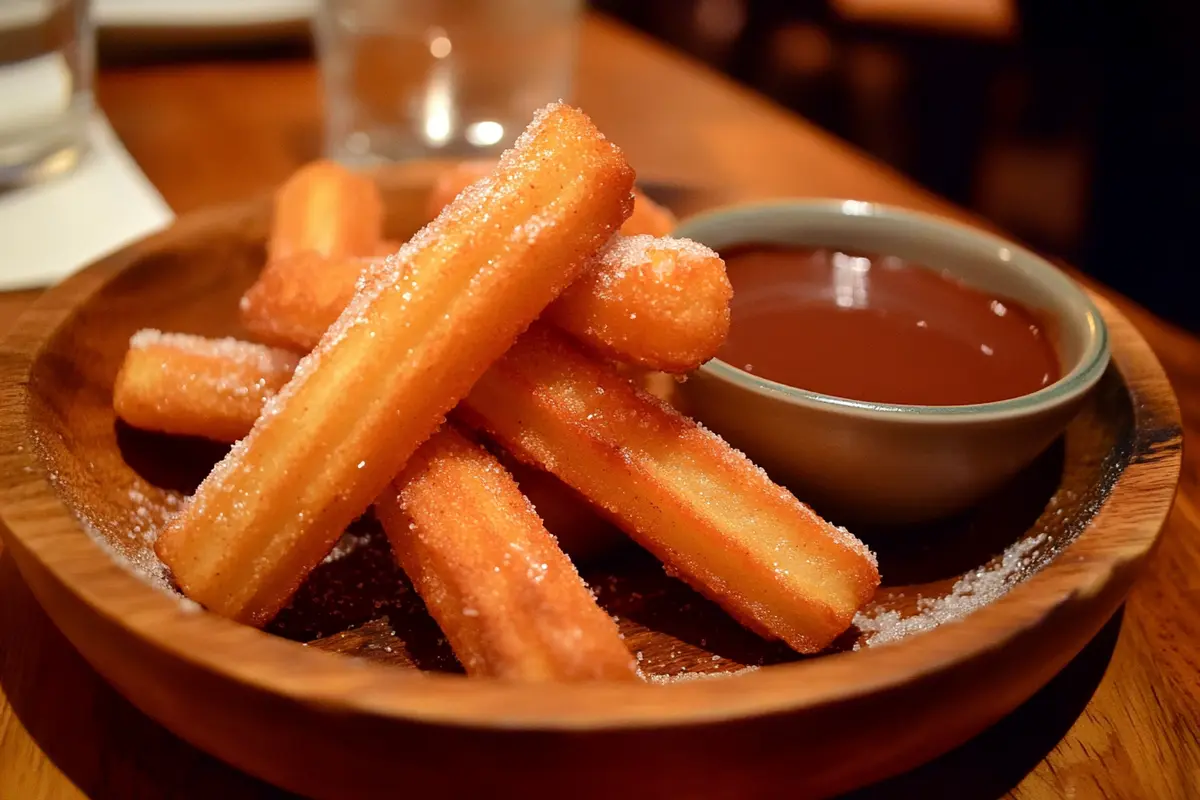Making churros is a delightful culinary endeavor, but it’s easy to stumble upon mistakes that could leave your treats less than perfect. From the dough preparation to frying, shaping, and even the toppings, each step matters when creating this beloved dessert. This article breaks down what not to do when making churros and offers clear solutions to common pitfalls, so you can enjoy crispy, golden, and delicious churros every time.
Introduction to Common Mistakes in Churro Making
What Are Churros?
Churros are a classic Spanish treat with universal appeal—crispy on the outside, soft and airy on the inside. They’re essentially fried dough sticks, often sprinkled with sugar and cinnamon, and sometimes paired with chocolate or caramel dipping sauces. While simple in concept, making them can be surprisingly tricky.
Why Do Mistakes Happen While Making Churros?
Mistakes often occur because making churros involves a combination of precise techniques and timing. Whether you’re using the wrong ingredients, mishandling the dough, or frying at improper temperatures, each step can contribute to a less-than-ideal outcome. As with any culinary art, knowing what to avoid is just as important as mastering what to do.
The Importance of Technique and Ingredients in Churro Success
Getting the right texture and flavor in churros depends on choosing high-quality ingredients, using proper equipment, and following time-tested techniques. The dough consistency, frying temperature, and piping method all play significant roles in achieving success. Skip even one critical detail, and you may find yourself with greasy, soggy, or undercooked churros.
By understanding common pitfalls and how to sidestep them, you’ll be well-equipped to create churros that are every bit as good as those found in artisan bakeries or street markets. Ready to learn what to avoid and how to perfect your process? Let’s move on to the next part!
Mistakes in Dough Preparation
Using the Wrong Flour
The type of flour you use is the foundation of great churros. If you’ve ever wondered why your churros are too chewy or lack structure, the culprit might be your choice of flour. All-purpose flour is ideal because it provides the right balance of gluten for a soft yet firm texture. Using whole wheat or self-rising flour can alter the dough consistency, making it harder to pipe or fry evenly. Always stick to a trusted recipe and avoid experimenting with flour types until you’re confident in the basics.
Overmixing or Undermixing the Dough
Dough consistency is critical in churro-making. Overmixing activates too much gluten, resulting in tough, rubbery churros, while undermixing leaves lumps that can clog your piping bag. Mix the ingredients until they’re just combined to maintain the delicate balance of airiness and elasticity.
Incorrect Water-to-Flour Ratio
Getting the water-to-flour ratio wrong can spell disaster. Too much water makes the dough sticky and unmanageable, while too little water results in a dry, crumbly mixture. Always measure your ingredients carefully and follow the recipe to the letter.
Not Allowing Dough to Rest Properly
Patience is key! Skipping the resting phase can make your dough harder to work with and result in uneven frying. Let the dough sit for at least 10–15 minutes before piping to ensure it’s pliable and smooth. This small step can make a big difference in the final result.
Errors During Frying

Incorrect Oil Temperature
One of the most common mistakes when making churros is frying at the wrong oil temperature. Too hot, and the churros burn on the outside while remaining raw inside; too cold, and they soak up excess oil, becoming greasy. Aim for a consistent temperature of 375°F (190°C) and use a thermometer to monitor it throughout.
Using the Wrong Type of Oil
Not all oils are created equal. Using oils with low smoke points, like olive or butter-based oils, can result in a smoky kitchen and a burnt taste. Stick to neutral, high-smoke-point oils like canola or vegetable oil for the best results.
Overcrowding the Pan
When you overcrowd the frying pan, the oil temperature drops drastically, leading to soggy, undercooked churros. Fry in small batches to maintain even heat and give each churro enough room to crisp up beautifully.
Not Frying Churros for the Right Amount of Time
Timing is everything! Undercooking leads to doughy centers, while overcooking results in overly hard churros. Fry each batch for about 2–3 minutes or until golden brown. Keep an eye on their color and texture as they fry.
By addressing these frying mishaps, you’ll avoid many pitfalls and enjoy perfectly crisp and golden churros every time. Ready to tackle shaping and texture?
Issues with Churro Shape and Texture
Improper Piping Technique

The piping process is where churros get their iconic ridged shape, but improper technique can ruin their appearance and texture. If you don’t apply consistent pressure when piping, your churros may come out uneven, affecting how they cook. Use a sturdy piping bag and maintain steady pressure to create uniform churros. Avoid rushing—precision is key to achieving the perfect texture.
Not Using a Star-Tipped Nozzle
A star-tipped nozzle is essential for churros, as it helps create those signature ridges that increase the surface area for frying. Without these ridges, your churros might lack the crispy exterior that makes them so delicious. If you’re wondering what not to do when making churros, skipping the star tip is a big no-no. Ensure your piping tools include the right nozzle before you begin.
Churros Coming Out Too Dense or Hollow
Dense or hollow churros are often the result of poorly made dough or incorrect frying temperatures. If the dough is too thick or improperly rested, it may not cook evenly, leading to a dense texture. Conversely, frying at too high a temperature can cause the exterior to puff up and cook too quickly, leaving the inside hollow. To fix this, follow the recipe precisely and monitor your frying process carefully.
Flavor and Toppings Mistakes

Over- or Under-Sugaring Churros
The balance of sugar on churros is vital to their overall flavor. Over-sugaring can overpower the subtle taste of the dough, while under-sugaring makes them bland. Roll your churros in a mix of sugar and cinnamon immediately after frying, while they’re still hot, to ensure the coating adheres evenly.
Not Incorporating Cinnamon Properly
Cinnamon is a defining flavor for churros, but neglecting to mix it properly with sugar can lead to uneven flavor distribution. Always stir your cinnamon-sugar mixture thoroughly before rolling your churros to avoid clumps or flavor imbalances.
Using Inappropriate Sauces or Fillings
Pairing churros with the wrong dipping sauces or fillings can undermine their flavor. For classic churros, rich chocolate or caramel sauce complements their crispy texture perfectly. Avoid overly sweet or artificial-tasting sauces, as they can detract from the churros’ natural taste. Experiment with flavors like vanilla cream or fruit preserves for a creative twist.
Safety Concerns in Churro Making
Preventing Dough Explosions
One of the scariest things that can happen while making churros is a dough explosion during frying. This usually occurs when there are air pockets trapped in the dough, or the dough’s moisture content is too high. Always pipe your churros evenly, ensuring no air bubbles are present. Additionally, avoid frying frozen or overly wet dough, as this can react violently with the hot oil. Safety first—never rush this step!
Proper Handling of Hot Oil
Working with hot oil can be dangerous if not done carefully. Keep your frying station organized and clear of clutter to minimize accidents. Always lower churros gently into the oil using tongs to avoid splashing. Never leave the frying pan unattended, and use a thermometer to maintain a consistent temperature, as overheating oil can quickly become a fire hazard.
Ensuring Equipment Is Safe and Clean
Dirty or faulty equipment is a recipe for disaster. Regularly inspect your piping bags, tips, and frying tools for wear and tear before starting. A piping bag that bursts mid-use or a poorly cleaned fryer can ruin the process. Prioritize cleanliness and proper maintenance to ensure a safe and enjoyable churro-making experience.
Pro Tips for Perfect Churros
Choosing the Right Ingredients
The foundation of perfect churros lies in the ingredients. Opt for high-quality flour, fresh eggs, and unsalted butter for the best flavor, as seen in this guide on how to make a fake churro. Avoid cutting corners by substituting key ingredients, as this can lead to disappointing results. When in doubt, stick to a reliable recipe for guidance.
Mastering Frying Techniques
Frying is the heart of churro-making, and mastering this step takes practice. Maintain the oil at a consistent temperature of 375°F (190°C) and fry small batches to ensure even cooking. Rotate the churros gently with tongs for uniform browning and drain them thoroughly on paper towels to remove excess oil.
Experimenting with Unique Flavors
While traditional churros are classic, don’t be afraid to get creative! Infuse the dough with citrus zest or vanilla for a subtle twist, or experiment with flavored sugars, like cocoa or cardamom, for coating. Dipping sauces can also offer a fun flavor profile—think dulce de leche, raspberry coulis, or spiced chocolate.
By following these pro tips, you’ll not only avoid common mistakes but also elevate your churro game to new heights. Remember, the key to success is learning what not to do when making churros and refining your technique with each attempt!
Conclusion and Final Thoughts
Churros are a simple yet rewarding treat, but they require attention to detail at every step. By now, you’ve learned what not to do when making churros, from avoiding common dough mistakes to perfecting frying techniques. Each misstep, whether it’s using the wrong ingredients or overlooking safety precautions, can have a big impact on the final product.
When making churros, remember to approach each step with care. Focus on the right balance of ingredients, maintain proper oil temperature, and use the correct equipment. These small but significant adjustments can transform your churros into crispy, golden perfection. And don’t forget to get creative with flavors and toppings to make them uniquely yours.
FAQs: Common Churro-Making Questions
What Are the Most Frequent Errors in Churro Preparation?
Common errors include using the wrong flour type, such as self-rising or whole wheat, which can impact texture. Overmixing or undermixing the dough also poses challenges, leading to tough or lumpy results. Additionally, incorrect frying temperatures—either too high or too low—can lead to burnt exteriors or greasy churros. Mastering these basics is key to creating excellent churros.
How Can You Prevent Churros from Exploding?
Explosions typically occur when the dough contains excess moisture or trapped air. To avoid this, ensure the mixture is thoroughly combined and properly rested before frying. Never fry frozen dough, as the drastic temperature change can be hazardous. Consistent piping and maintaining an oil temperature of 375°F (190°C) are critical for safe and successful frying.
How Do You Tell If Churros Have Gone Bad?
Fresh churros are always best. Discard them if they become soggy, stale, or develop an unpleasant smell. Store churros in an airtight container at room temperature for up to two days. For reheating, use an oven or air fryer to restore crispness, but avoid refrigerating them, as it causes loss of texture.
Why Are My Churros Raw Inside?
Undercooked centers are a sign of frying issues. This can happen if the oil temperature is too high, causing the exterior to cook too quickly while leaving the inside raw. Lower the heat to maintain a steady 375°F (190°C) and ensure proper frying times of 2–3 minutes per side. Piping thinner churros can also help them cook more evenly.

